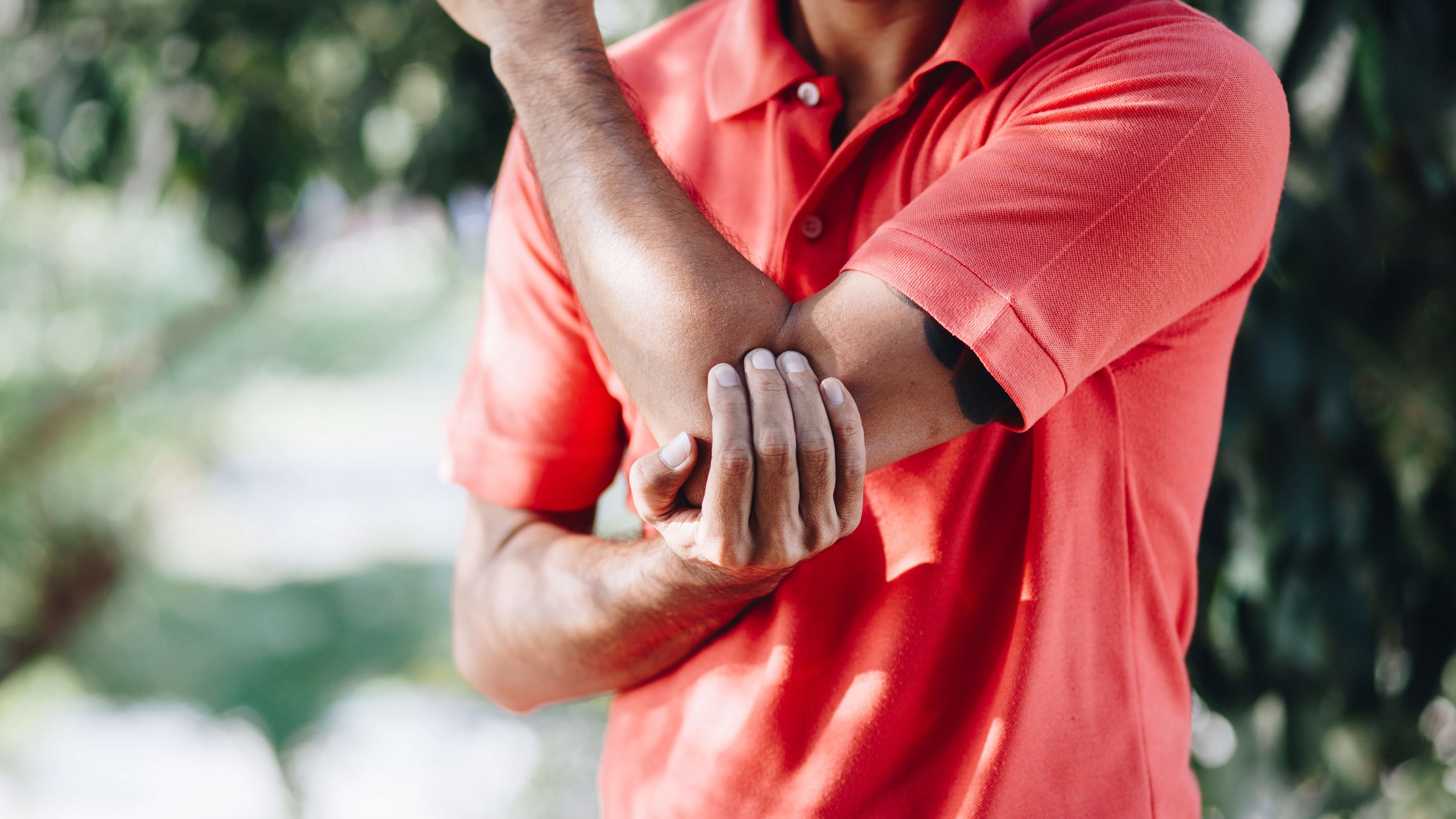Tennis elbow treatment from Benji Physio
Tennis elbow, clinically known as lateral epicondylitis, is a condition characterized by pain and inflammation on the outer part of the elbow. Despite its name, tennis elbow is not exclusive to tennis players and can affect anyone who engages in repetitive arm and wrist movements.
The condition primarily involves the outer part of the elbow, where the tendons and muscles of the forearm attach to a bony bump called the lateral epicondyle.
How can Benji Physio help your Tennis elbow?
-
We will first assess your injury and ensure you get the right diagnosis. Tennis elbow can often be confused with ulnar nerve entrapment or an issue coming from the wrist or the shoulder.
We will work out the causes for the injury to have occurred and provide the right modifications, which could include changing your equipment, your technique, your training regime, your grip, your working position, etc.
-
ESWT has been shown to be very successful in treating tendon injuries such as tennis elbow and we have had great results at the clinic.
-
Often we realise that your tennis elbow has been caused by a muscle imbalance such lack of strength in the shoulder muscle, lack of back rotation, lack of back strength, etc. We will then provide the right treatment and exercises to address these issues.
-
Depending on the nature of the injury, some tennis elbows respond better to acupuncture. Our physios will be able to advise you if acupuncture is a good option. We offer acupuncture at the clinic.
-
In some cases, injection therapy is recommended. We will then refer you to our in-house orthopaedic consultant who will inject your tendon
Free Exercises that can help tennis elbow.
Symptoms of tennis elbow may include:
1. Pain and tenderness on the outer side of the elbow.
2. Weakness in the hands and wrists.
3. Stiffness in the elbow.
4. Numbness or tingling that may radiate into the fingers.
Tennis’ elbow, or lateral epicondylitis, is often caused by repetitive stress on the muscles and tendons in the forearm. Here are the key reasons:
1. Repetitive Movements:
Doing activities that repeatedly involve gripping, flexing, or swinging the wrist and fingers can strain the tendons attached to the inner side of the elbow.
2. Sports and Activities:
While tennis can contribute, other sports like golf, weightlifting, or any activity with repetitive wrist and forearm motions can also cause golfer's elbow. We also see a lot of patients with shoulder weakness and poor posture at work complaining of tennis elbow.
3. Improper Technique:
Using incorrect techniques during sports or activities like weightlifting can put too much stress on the tendons, leading to pain.
4. Equipment Issues:
Using the wrong or improperly sized sports equipment, such as golf clubs or tennis rackets, can contribute to the development of tennis elbow.
5. Muscle Imbalances:
Weakness or imbalance in forearm muscles can increase the risk. This may be due to poor conditioning or lack of strength in certain muscle groups.
7. Occupational Factors:
Certain jobs requiring repetitive hand and wrist movements, like using tools or typing, may contribute to tennis elbow.
6. Age and Gender:
Tennis elbow is more common in individuals aged 30 to 50, and it tends to affect men more than women.
8. Poor Warm-Up or Conditioning:
Not warming up adequately before physical activities or insufficient muscle conditioning can raise the risk of injury.



Squeeze the ring between the thumb and one or all fingers.
Make sure to form a “O” with the fingers.
Hold for 2 to 10 seconds depending on your therapist’s advice.
Will Help
Hand and wrist post-op
Trapeziectomy
Fingers tendinopathy
Finger triggers
Tennis Elbow
Golfer’s Elbow